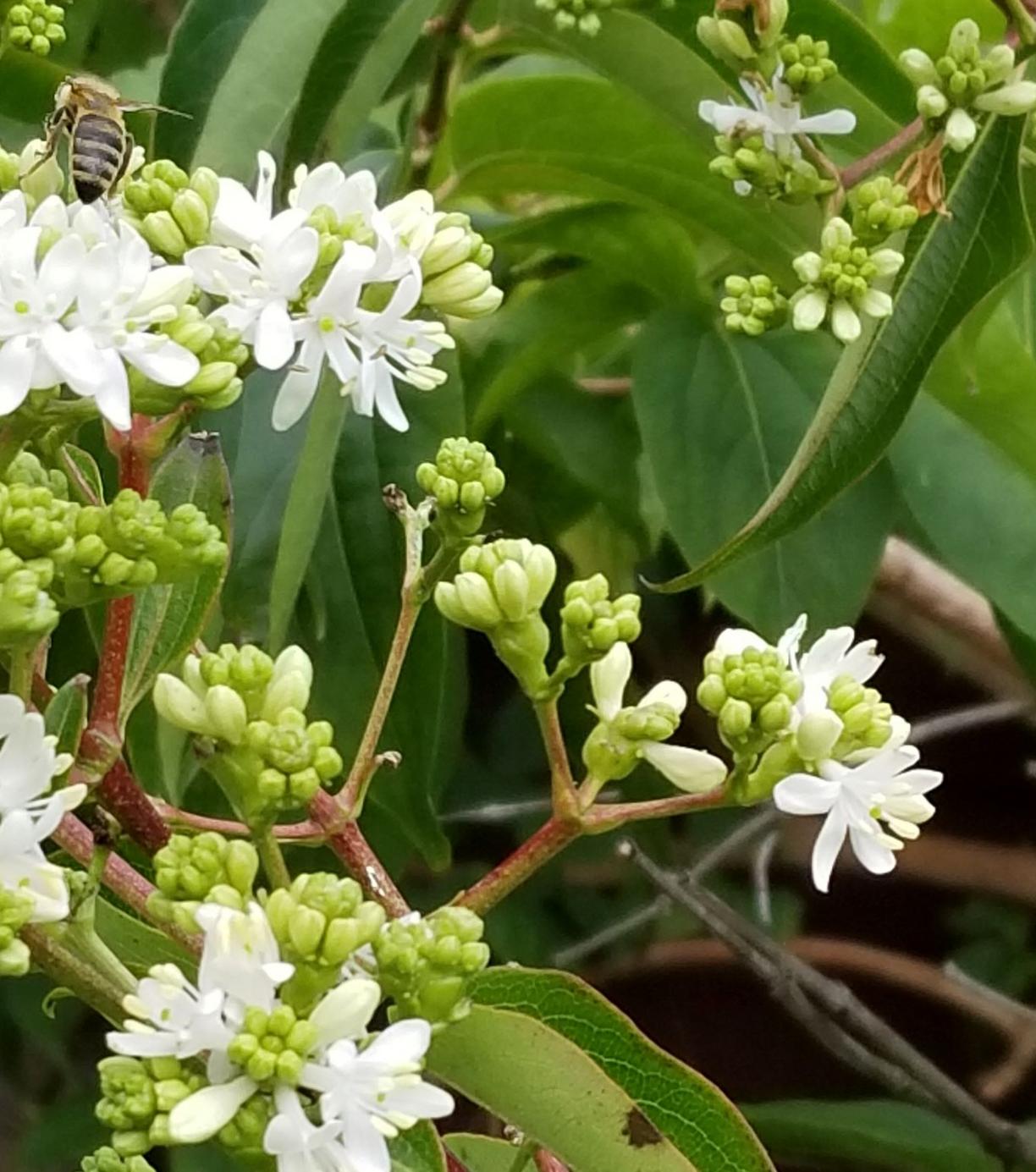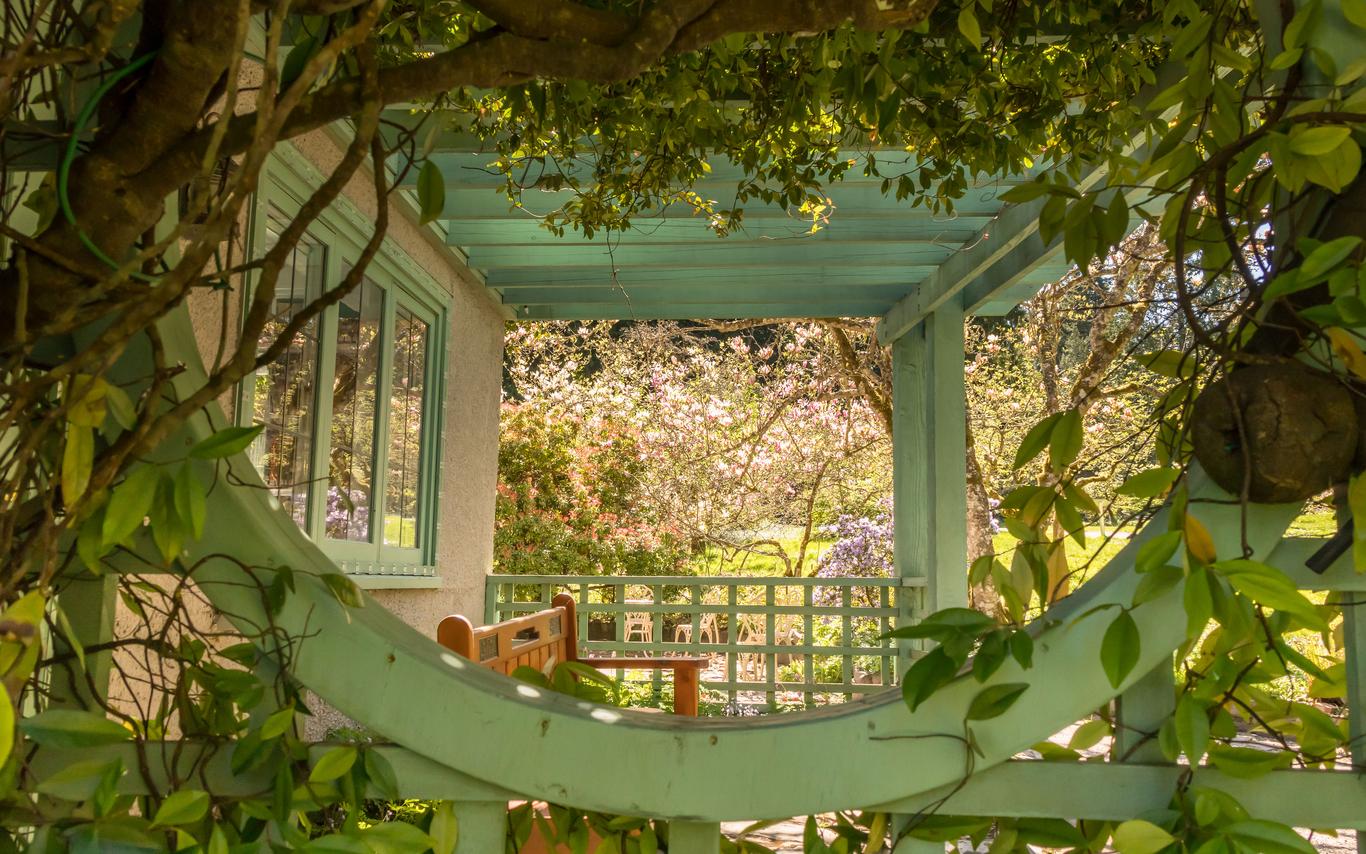by Vancouver Island Master Gardeners Association
Latin name: Heptacodium miconioides
Common Name: Heptacodium or Seven-son flower
This lovely tall shrub with dark green deciduous foliage is not widely known in the Pacific Northwest. It is much better known in northeastern USA. Introduced from China in the 1980s, it is treasured for its long blooming fragrant flowers which are followed by masses of pink calyces enclosing the small dry fruits.
Heptacodium in the Woodbine family (Caprifoliaceae) is related to the more familiar Kolkwitzia and Abelia shrubs. This somewhat uncommon shrub in the Pacific Northwest, is the only member of its Genus, and is native to China where the wild population is threatened by habitat loss. An attractive plant in all seasons, it blooms in late summer and its fragrant white flower clusters are followed by an even showier display of deep rose sepals which enclose the small fruits. This can last well into October. After the leaves have fallen and if the twiggy growth at the base of the shrub is removed, the shrub displays winter interest with its exfoliating bark in varied shades of grey to orangish brown. This handsome shrub may be grown as a single or multi-stemmed tree and can reach 6+ metres. The name seven-sons-flower comes from the seven florets that make up the whorled flower clusters (though the central bud is not actually a floral bud but the continuation of the floral axis). Heptacodium is also a good source of nectar for pollinating insects.
Heptacodium miconioides is found in the Himalayan Rhodo bed at Milner Gardens & Woodland.

Photo courtesy Anita Leschied.
| Attribute | Description |
|---|---|
| Form: | Vase shaped shrub which may be grown as a single or multi stemmed tree. |
| Foliage type: | Deciduous; opposite-leaves narrowly heart shaped, entire, 8-10 cm long with three parallel veins. |
| Height/Width: | 3-6+ m tall and 2-3 m wide. |
| Hardiness Zone: | 5 - 9. |
| Exposure: | Full sun or light shade but blooms better in full sun. |
| Flower Colour: | Creamy white flowers in large panicles. |
| Leaf Colour: | Glossy dark green leaves. |
| Flower Time: | Blooms in late summer through a long period into fall. |
| Preferred Soil: | Tolerant to most soil types but prefers a moist acid soil and regular water. |
| Other: | This plant is a good substitute for crape myrtle which is less hardy, and is not prone to disease or pests. It is tolerant of salt spray and deer resistant. |

